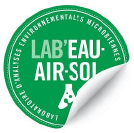Since the tabling of the 2022-2025 action plan on asbestos and asbestos residues in Quebec, particular attention has been paid to the use of asbestos fibers in asphalt mixtures using recycled bitumen aggregates (RBA).
As the use of asbestos began to decline sharply between 1970 and 1990, and Quebec found itself with piles of chrysotile residues and no buyers for its production, the focus was on promoting the safe use of asbestos. After years of discussion and laboratory testing, the use of chrysotile in bitumen became common practice in the 90s.
Chrysotile asbestos, being a highly resistant fibrous material, enables significant reinforcement of the bitumen matrix. Also, as this mixture is “sticky” and essentially non-friable, it is relatively safe to use, at least for road users. However, as with demolition work in the building industry, it is work at the end of the material’s useful life that presents the greatest risk of exposure to asbestos fibers. The work involved is far more costly than it would be for conventional asphalt, and requires special measures to protect workers.
For safety, performance and cost reasons, and due to advances in bitumen design technologies, the Ministry of Transport removed asbestos-containing mixes from its standards in 2011.
The stakes remain high, however, since the new formulas still include a proportion of recycled products. These products must therefore be tested before being included in today’s blends.
Plus…
In addition to chrysotile, which is deliberately added to certain types of bitumen mixes because of its mechanical qualities, significant quantities of actinolite and/or tremolite (two other types of asbestos ore) can also be found in the aggregate. In this case, it’s a collateral occurrence to the addition of gravel. Since the Quebec subsoil is conducive to the presence of these types of minerals, the extraction of gravel from certain quarries also entails the removal of a certain quantity of asbestos in the form of actinolite or tremolite. The Bas-St-Laurent, Chaudière-Appalaches and surrounding regions are particularly at risk, given their proximity to major geological formations favorable to these minerals.
Air samples taken in the vicinity of roadworks containing actinolite/tremolite-contaminated aggregates sometimes contain significant quantities of these asbestos fibers. However, as mentioned above, given the nature of the material, the risk of exposure to road users is considered negligible.
Analysis of asbestos in GBR and asphalt mixes
Asphalt mixes are often more difficult to analyze. The sticky nature of bitumen and the very low concentration of asbestos, around 0.1% in new asphalt mixes using recycled asbestos aggregates, make this a delicate operation.
Recycled bitumen aggregates (GBR) analyzed at source contain around 1% asbestos and are easier to characterize.
Lab’EAU-AIR-SOL has developed a specific bitumen sample preparation method to enhance test sensitivity at low asbestos concentrations. Trust us to analyze your aggregates!
More on the subject :
Mise à jour des connaissances sur l’utilisation de l’amiante dans les enrobés bitumineux, INSTITUT NATIONAL DE SANTÉ PUBLIQUE DU QUÉBEC :
Exposure from roads with asbestos-containing bituminous mix, INSTITUT NATIONAL DE SANTÉ PUBLIQUE DU QUÉBEC :
Enrobés additionnés de fibres d’amiante, Rapport sectoriel, MINISTÈRE DES TRANSPORTS, November 2019 :
 MEMBRE DU GROUPE EXPERTBÂTIMENT
MEMBRE DU GROUPE EXPERTBÂTIMENT